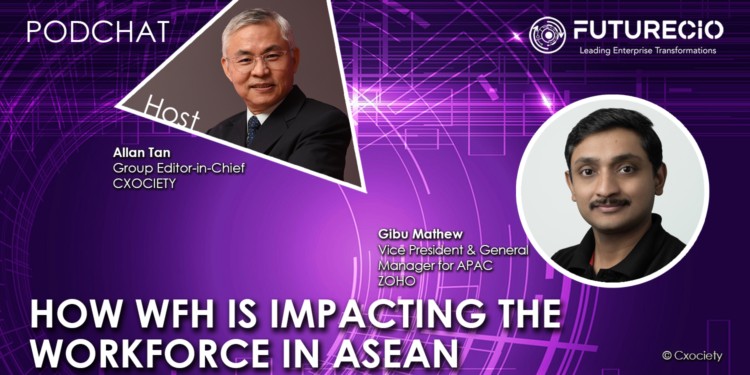Gartner estimates that remote workers will represent 32% of all employees worldwide by the end of 2021. This is up from 17% of employees in 2019.
Gartner defines a remote worker as an employee working away from their company, government, or customer site at least one full day a week (hybrid workers) or who work fully from home (fully remote workers).
“A hybrid workforce is the future of the work, with both remote and on-site part of the same solution to optimize employers’ workforce needs,” said Ranjit Atwal, senior research director at Gartner.
Business lesson from pandemic
According to the Sustainability Institute by ERM, COVID-19 has tested the preparedness and resiliency of businesses in Southeast Asia. “Southeast Asian business responses to the current pandemic have revealed areas where more work is needed to overcome future challenges.
Gibu Mathew, Zoho’s vice president & general manager for Asia-Pacific concurred adding that businesses have started to realise that they need to have a more resilient approach to solving and meeting their business goals.
“In terms of technology, I feel that investing in the right IT management tools for managing your private clouds and embracing the cloud itself for delivering services have become vital. On the one hand, organisations that were not prepared for such sudden changes became vulnerable to security and scalability issues as their IT teams did not have enough visibility on all the moving parts in their IT environment,” he added.
He opined that with business needs changing dynamically, those who did not move quickly had their growth stifled. On the other hand, companies that adopted a solid cloud strategy both for IT management tools and business software were far less affected by the pandemic.
Measuring tech strategy effectiveness
The EDBI-Kearney paper, Racing toward the future: artificial intelligence in Southeast Asia, suggests that artificial intelligence presents both a challenge and opportunity for economies in the region.
The report noted that in Southeast Asia, revenue management is the starting point for AI investments, achieving two to three times more attention than cost management. The key to maximizing the value of AI is fully engaging stakeholders to ensure that the AI solutions address the business priorities and deliver a near-term impact.
Mathew cautioned that AI and business analytics are only as good as the quality of data that you input. Data preparation and data context are hence very important before it is modelled by an AI system.
“Businesses should choose vendor solutions that prevent silos by design to make sure their employees have less scope to make errors and minimize training for simple problems. Cloud vendors strive hard to make the deployment of AI and analytics easy.
“Hence, IT professionals with even limited exposure to such technologies can equip themselves to handle the bulk of their everyday tasks for their end-users. And with subsequent advanced training, they can work themselves up to tackling complex contextual business problems.
“Providing the right cross-functional digital spaces for collaboration and with the right mix of learning management systems can help in this training. Once they are upskilled, organisations should ensure such employees are aligned with the business objectives, to gain value,” he continued.
Securing the cloud
IDC senior research manager for Asia-Pacific, Ashutosh Bisht, acknowledged that COVID-19 made us realize that no business is 100% invulnerable, however, enterprises who were ahead on the digital transformation curve were able to sustain operations during the pandemic and recover well from the crisis than the laggards.
“During this time, cloud services became the underpinning technology, integrated with technologies such as DevOps, AI and BDA. Organizations were able to reimagine their business by continuously innovating and delivering to the end-user,” he added.
The concept of cloud reliability, scalability, availability, reduced Capex Spend, and most importantly security is driving enterprises in the region to migrate to public cloud services with a renewed enthusiasm.
Recognizing the importance of security in the cloud, Mathew added that education is important it comes to security. He suggests employee training on a continuous basis so that they're less likely to fall victim to phishing or other attacks.
He also believed it important to track and correlate user activity across all cloud deployments to eliminate security blind spots. He suggested establishing role-based access privileges, just-in-time policies, and just-enough-access policies.
“Follow the least privilege and Zero Trust models,” he continued.
Click on the podchat player and listen to Mathew share his opinion on the following questions:
- What would you say is the number one learning for businesses in ASEAN, looking at it from (a) process; and (b) technology?
- How should enterprises address the issue of training so that employees can make full use of the capabilities of emerging technologies like AI and automation?
- What is a reasonable strategy that would enable them to measure the effectiveness of AI, analytics and other new technologies without costing the organisation a sizeable investment in what is already a very limited budget?
- As we see more enterprises move business applications to the cloud, can you name 3 things enterprises to need to do to secure their use of the cloud?





